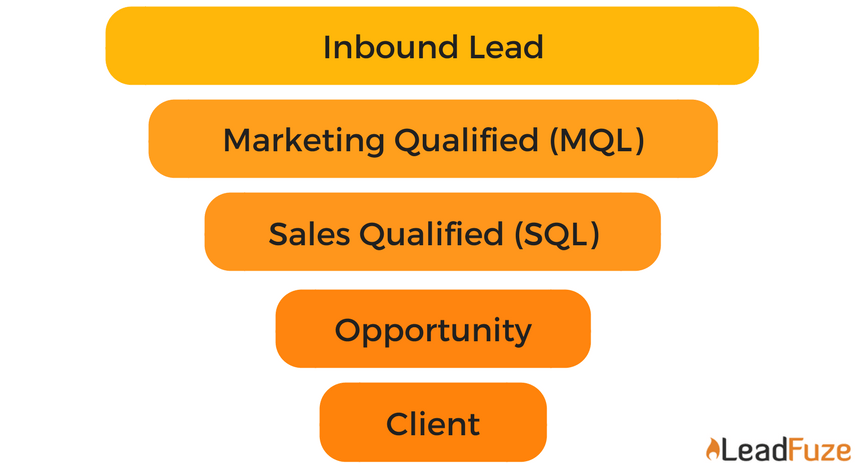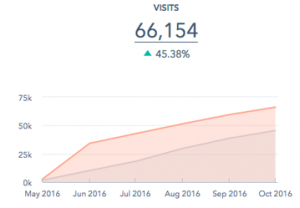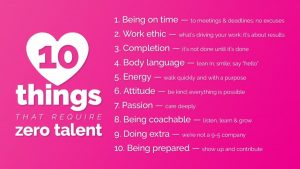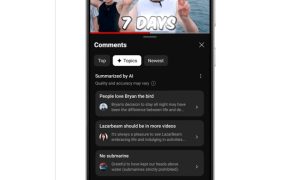— October 5, 2017
Since the term “inbound” was created and pioneered by the folks over at HubSpot, ideal client profiles (ICPs) have been a subject dominated by those who are into using inbound marketing. But this is slowly beginning to change (for the better). In this post, we’re talking heavily about setting up ICPs with the right firmographics — specifically for B2Bs.
There are giants in the outbound sales industry who are (and have been) using ideal profiles to generate quality leads without having to bring them in with SEO, organic traffic, or even paid ads.
Most inbound methods put the emphasis on the individual getting content, not the brand.

While the person you’re talking to is very important, outbound B2Bs need to first concentrate on the markets and companies within those markets.
So, in order for you to fully benefit from ICPs, we have to look at the attributes of the organizations that are most likely to buy.
This involves firmographics.
Firmographics: Firmographics are descriptive attributes of firms that can be used to aggregate individual firms into meaningful market segments. They describe businesses, non-profits, and governmental entities. Essentially, firmographics are to businesses and organizations what demographics are to people. (Source)
Why an Outbound Sales Ideal Customer Profile?
B2B inbound and outbound ICPs are very similar, but there is one main difference between the two.
From an inbound perspective, you are looking at leads flowing into your funnel and seeing who meets your criteria. Those that do may be contacted, but may not depending on how your sales process is set up.
This makes content written for individuals within those brands vital for qualifying leads.
From the outbound sales side, you are looking proactively at brands that may not have any idea who you are. These contacts simply meet the criteria in your profiles and are contacted.
The funnel is much shorter in outbound sales. Here’s an image of a typical inbound funnel, followed by an example of an outbound funnel.
Inbound Funnel Example

Outbound Funnel Example

See the difference?
Information you acquire that will make up your outbound profiles may also be utilized differently for sales purposes. And even the data itself may be different. This post is to help you niche down and find the attributes of those businesses and decision makers that buy your products.
Creating this profile correctly will help you throughout the other modules of the course. Understanding who your buyers are makes it much easier to:
- Discover Your Unique Value
- Position Your Company and Products Properly
- Find Lead Sources
- Identify Prospects and Weed Out Suspects
- Develop Your Copy (Email, Web Copy, and More)
Developing Your Ideal Client Profiles (Step by Step)
Step One: Find Your Target Market(s)
You do this by looking at your current clients (Good and Bad). There’s a reason they’re called ideal profiles.
One of the best places to look are the accounts you’re currently servicing. It’s likely there are many customers on your books that have similar attributes — both positive and negative.
As you look into these things and call your clients, it will get clearer over time who your best customers are, and why you feel this way. Too many B2B companies try to be “all things to all people” and it ends up leaving them with a frustrated sales team and lackluster growth.
There are two basic things to look at when eyeing your current clientele. The industry/company data and the people-level (e.g. decision makers) data.
Let’s take a look at exactly how to find your ideal buyers.
Find Common Denominators Until You See a Market
Start with the companies who are currently using your product(s). Separate them by industry first — it’s often the most telling.
Example:
You have 70 current clients for your software product that tracks resources for manufacturers. Upon research, you find 20 of them are all plastic injection molders. There’s something to look at there. It’s kind of like those little green leaves Ancestry.com provides.
It’s a hint as to whom you may be able to target. You then have to dig deeper and figure out why those businesses like your stuff better.
Let’s run with our injection molders example for a bit.
Finding out that you have an abundance of one industry as opposed to others is not a clear indication in and of itself. If you have targeted molders in your advertising, that could explain the disproportionate number — but that doesn’t mean this is your “ideal” buyer.
That said, if you discover they have come through word of mouth or specific features of your product, you can safely assume that a target market is close.
What Happens if Nothing is Clear?
If you can’t find a clear industry that stands out from the crowd, you may have to test the industries of a few of your clients. To use the example above, you could have a mix of fabricators and manufacturers who love to track their resources with your product.
Here’s what to do:
- Pick one or two industries (based on the factors in our next section).
- Test a batch of leads.
- Keep detailed track of the results.
Once you have some data from a few hundred leads ran through your funnel, you have enough data to move on in the process of developing your ICP.
What If We Are Pre-Startup?
If you have zero clients (or very few), you’ll have to do some educated guessing.
Chances are, you’ve already done some digging on your competition. The quickest way to choose a test market is to find the product that is closest to resembling yours and take a look at the keywords and target markets they’re trying to reach.
Use a tool like Spyfu to see where your competitors are spending money and who is seeing the ads. Even if you have a clear target market — this wouldn’t be a bad idea.
Bonus Resource: Here’s a fantastic list of 25 ways to help you “spy” better.
Once you have a few potential markets on the list, it’s time to niche even further (until it hurts) to find the most profitable space for your company.
Step Two: Niche Until It Hurts (Using the Firmographics)
It’s best to have a few potential target markets from your current client data (or the other procedures outlined in step one). Starting with a list of 3-5 should do it. Keeping with the example, our software company could have:
- Plastic Injection Molders
- Metal Fabricators (like equipment and tool manufacturers)
- Farmers (tracking resources like water and nutrients)
All three of these could be ideal markets. But figuring out your ideal buyers helps you focus and get the most out of your lead generation.
Finding the best one (possibly two) to move forward will help fill your pipeline with leads that will convert at a much higher position — due to how well you know their industry.
Before we begin this process, we need to address what we’re assuming. At this point you should have:
- Customer Data (from your own clients or from competitors).
- Potential Markets (that you have at least ran enough leads through to have some data).
Without these, you’ll be flying blind trying to niche down.
Start Sorting the Firmographics
Firmographics: Descriptive attributes of firms that can be used to aggregate individual firms into meaningful market segments. They describe businesses, non-profits, and governmental entities. Essentially, firmographics are to businesses and organizations what demographics are to people. (source)
These data points are the things your ideal brands have in common. Let’s go over several of them briefly.
- Industry: Finding the industries that are buying from you is really the first step into this process and, often times, the easiest.
- Location: Depending on your product, this may not be a determining factor. That said, it could help you know the best times to push your products. Elements such as weather, tourist traffic, and many other factors can make this useful in the sales and marketing process.
- Size: Regardless of who your products can serve, there will be businesses of certain sizes that are more geared toward using them — and others that are less likely to buy. If you find that most of your business comes from businesses with less than 25 employees or more than 200, that’s your sweet spot.
- Company Structure: Depending on the buying cycle, you could avoid certain organizations and choose to target a specific layout. For instance, small operations may not have enough money and larger corporations may have a complicated buying process that is too lengthy.
- Revenue/Performance: There will be a level of income that can indicate the readiness of certain brands to buy your product. Finding the right dollar range can help you tremendously when trying to understand the budgeting and objections you’ll encounter before you ever reach out.
How to Make It Hurt
Some of these firmographic points may have seemed redundant — because they are.
You’re not trying to fill your pipeline with large numbers of decent leads. You’re trying to send personalized emails, voicemails, and social prompts to highly targeted contacts in brands that are likely to pull the trigger.
Instead of shoveling in dirt, hoping to pull out a diamond, you’re more like a fighter pilot trying to hone in on your opponent. You’re not firing wildly, you’re waiting until you hear the lock.
Take a look at your current clients, look at who your competition is targeting, call your clients (and theirs) to find out as much as you can.
Then, analyse the data and find a lock on your ideal target.
Step Three: Find the Buyer Within the Buyer
Once you have the niche down, you still have to talk with a person. Gary Vaynerchuck said it best when describing B2B sales;
“If you are in the B2B space I am stunned by how many forget a human still makes the buying decision … B2b = business to business and B2C is business to consumer … Very different .. Yet basically the same #HumansMakeTheCalls” — Gary Vee.
Even if you’ve got the target market, industry, company size, etc., you’re not quite done. Now, you have to find out who you (or your reps) are going to be interacting with in the sales process.
The company may need what you provide, but there is a flesh and blood human being (or maybe a few of them) that make decisions.
While there is usually only one decision maker, there are, on average, 5 to 6 personas that make up the average company’s buying team. Things like different roles and titles are one of the issues, but the most prominent reason for multiple personas are influencers.
Influencers are individuals who have direct or indirect access to decision makers and often times influence the decision process. A few examples include:
- Direct Reports
- Supervisors
- Colleagues
Pro Tip: To have the best odds of reaching the decision maker in a particular brand, find three likely contacts in each company.
How about a practical example?
We are selling a product that helps track labor stats and compliance to metal fabricators who do $ 10-20 million in annual sales and have 50-100 employees. They love our software, but who’s most likely to buy it?
The head of human resources would be my guess. Let’s say that after a quick look at who made the decision to buy and who our competitors target — it is indeed the human resources director that usually says the final “yes”.
Other influencers and decision makers could include safety supervisors, the founder/CEO, or the Head of Operations — depending on the size and structure of the business.
So, after a bit of digging, we need a short persona for human resource heads, COOs, CEOs and maybe someone in charge of safety. Find the most common three and go deeper to find out what makes them tick, in regards to your labor software.
Adding a Persona to Your Profile
Essentially, you’re adding these buyer personas (like the human resources example above) into your client profile. The people will buy your product for the brand.
Instead of firmographic data, you’re going to be looking for the demographics and other variables that will affect how you pitch and move buyers down the funnel.
While it may not be hard to figure out the one or two common people who make decisions, it will take some thought to find out what’s important to them.
Continued Example: If you’re dealing with founders, it’s pretty easy to figure out what they want. More business and more free time. If your product can provide one of those at a decent ROI, it’s not a hard sale.
But once you get to a level selling to people on the payroll, needs are more complex.
A human resources director will like the idea of a product that saves time. But if it doesn’t help them perform better overall, they may pass. But what if you could convince the contact that your product will help them look like they’re doing the job better this year than last year?
You’ll have anyone’s attention. And it’s details like this that you have to find by asking questions and looking for insights.
Choosing an industry and company size is fairly pragmatic. The numbers are usually clear and reliable.
Things to Consider
- Demographic Information: Common age, gender, location, titles (may vary).
- Job Details and Responsibilities: The metrics to which they’re held accountable and how busy they are at which times of day/month/year.
- Day in the Life: Figuring out where they spend the most time, why, and how your products/services can help.
- Pains and Frustrations: Finding out which parts of the job prospects would change if they could.
- Career Goals/Personal Goals: The aspirations your prospect has in this company or for their career in general.
- Prominent Resources for Their Role: The blogs they read, industry reports they order/download and the people they follow on their work social profiles.
- Buying Cycle/Process: Finding the average process and timeline for buying and implementing a new solution (like yours).
- Most Common Objections: Figuring out the things this persona always brings up to help reps overcome these objections quickly.
- Key Identifiers: If you hear or see these traits, you are likely dealing with the decision maker of this brand.
Where to Find the Data?
- Most commonly, this information can be found by calling both your current clients that fit into your new profile and calling those leads that didn’t end up buying from you.
- Competitor marketing is also a prime place to look at copy written specifically for similar industries.
- Social profiles, company websites, and lead generation tools can also be valuable resources.
- Cold outreach is also very effective. Sending an email to the top 3 potential decision makers on the same day could be a great way to find the person in charge. It also works to introduce yourself to potential influencers.
Start Creating Your Profile
Are firmographics a part of your customer personas?
Ideal Buyer Profiles are the initial step in finding your unique value. This also allows you to better position your brand to be seen by your target industries.
If you follow the steps in this module, you’ll have a list of two to three niche markets.
Next, you have to discover what it is about your brand that these markets love about your products. But that’s another post.
Business & Finance Articles on Business 2 Community
(86)






